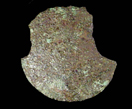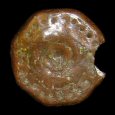Back to: Introduction or Search by Style
Cufflinks by Site
Click on individual images to see larger view.
c.
1651 - 1690s |
c. 1710 |
 |
 |
c.
1689 - 1711 |
c. 1720 |
 |



|
18CH778 Johnsontown c. 1670 - 1740 |
c. 1650 - 1750 |
 |
 |
c. 1711 - 1754











18QU28 Bennett's Pointc.
1675 - 1765 |
c. 1650 - 1770 |
  |
   |
18CH354 Bateman/Swan Point
c. 1710-1780





c. 1700 - 1790s







18WA288 Antietam Furnace c. 1761 - 1790 |
18PR705 Pleasant Prospect Site 1 c. 1730 - 1790s |
 |
    |
18APX12: Isolated Find in Annapolis ca. 1775 - 1800 |
18ST642 NAVAIR c. 1750 - 1800s |
 |

|
c. 1737 - 1806



c. 1780 - 1820 |
c. 1798 - 1880s |

|
 |
18PR175
Oxon Hill / Addison
c. 1687 - 1895






c. 1800-1915 |
c. 1720 - 1930 |
 |
 |
c. 1756 - 1930s












18ST87 St. Inigoes Manor House
at Priest’s Point |
c. 1675 - 1943 |

|
 |
18FR575 Birely Tannery |
c. 1756 - Present |
   |
 |

